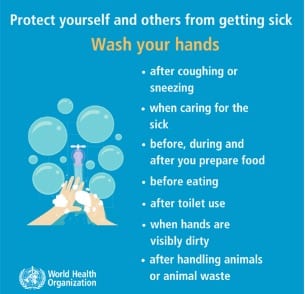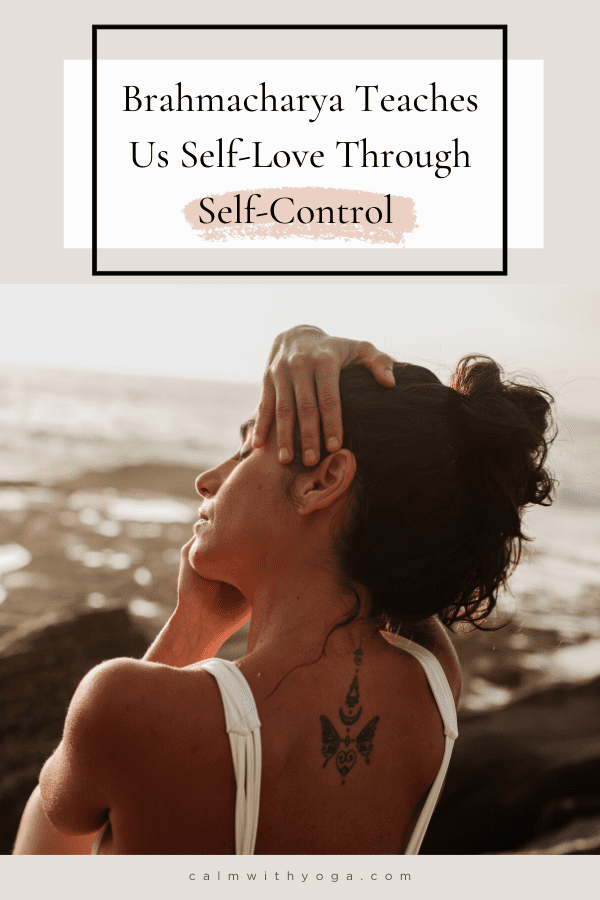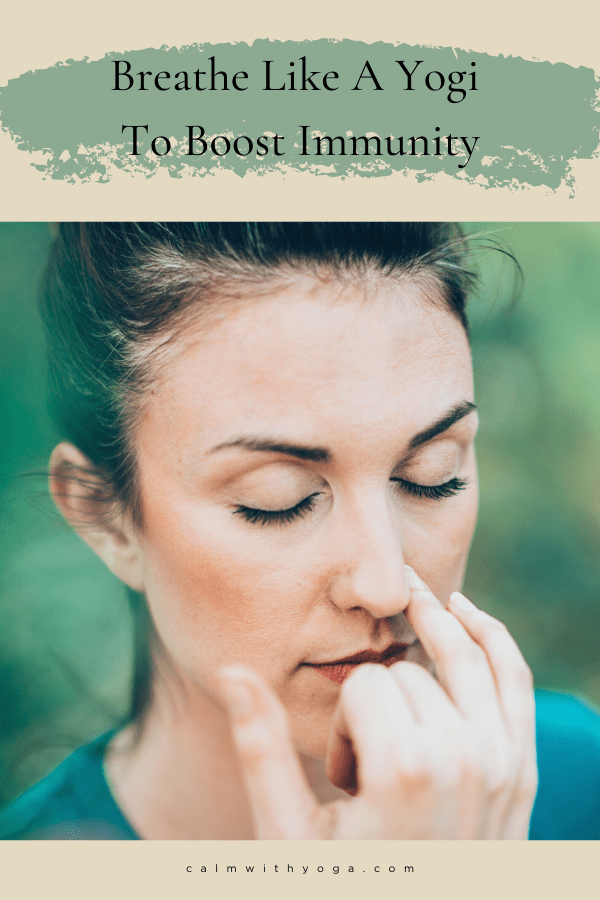– Les Brown, author As of the time of this writing, the World Health Organization reported that there are 1.9 million cases worldwide. (1) Schools and universities have shut down. Companies are requesting employees to work from home. Items such as face masks, sanitizers, and Lysol wipes are out of stock. So how do we cope with all of this change and uncertainty? How can we keep our minds calm and our immune system strong? Yoga can be very effective and useful during this time, even in unexpected ways. You don’t have to go to the yoga studio or step on a mat to practice immune-boosting yoga.
Let’s start with the facts…
It can be hard to separate facts from fears during a collective crisis such as this health threat so let’s start here. The best thing you can do to manage anxiety about a situation is to get informed. This reduces unnecessary worry or fear caused by widely spread myths and misinformation. This is what health authorities like the WHO (World Health Organization) and the U.S. CDC (Center for Disease Control) have shared so far: From WHO: (3) Q: What are the COVID-19 symptoms? Q: How does it spread? Most people (about 80%) recover from the disease without needing special treatment. Around 1 out of every 6 people who get COVID-19 becomes seriously ill and develops difficulty breathing. Older people, and those with underlying medical problems like high blood pressure, heart problems or diabetes, are more likely to develop serious illness. People with fever, cough and difficulty breathing should seek medical attention.” Q: Can the virus be transmitted through the air? Q: Who is at risk of developing severe illness? Q: Should I wear a mask to protect myself?
Other suggested protective measures:
1 – Wash your hands frequently and thoroughly for at least 20 seconds. (You can also use an above 60% alcohol-based sanitizer)
2 – Avoid touching your eyes, mouth, nose, and face. 3 – Because the virus spreads through droplets, it’s very important to cover your face and mouth when you or others cough or sneeze. (Dispose of your tissue in a covered trash bin immediately.) 4 – Stay home if you feel sick or any of the symptoms mentioned above – no matter how mild they may be.
How Yoga can help you experience less anxiety, more inner calm, & stronger immunity:
The Yoga Sutras of Patanjali is regarded as one of the most authoritative texts on how to practice true Yoga. When it’s turbulent it’s difficult to see. When it’s calm everything becomes clear.” – Prasad Mahes This 1,700-year-old ancient text starts off by defining yoga practice as “stilling the ripples of the mind.” Anxiety, worry, fear, hopelessness, and dread are emotions that create fast-moving and chaotic mental ripples. The chronic experience of these emotions takes us further away from experiencing true Yoga. Turbulent and chaotic mental ripples put our nervous system into high alert and activate the fight or flight response (stress mode). Studies show that short-term stress (minutes or hours) may have a strengthening effect on the immune system, while unmanaged, long-term, and chronic stress (days, weeks, or months) can suppress or dysregulate our immune response. (2) Stress mode also leads to impulsive, knee-jerk reactions, and often time rash decisions. In order to better defend ourselves and our bodies from this virus we need a strong immune system and a clear, informed, level head to be able to make wise choices and act quickly if we need to. According to a review study published in the Journal of Behavioral Medicine, the regular practice of Yoga can be an effective and natural way to fight inflammation and strengthen your immune response. (3)
Although most of us may think of yoga as physical activity or a workout, that’s really just one aspect of the ‘big picture’ of true Yoga. Although the physical practice of yoga (asana) is very beneficial and immune-strengthening, it’s not the only way to practice. Classical Yoga, which is outlined in Patanjali’s Yoga Sutras, is comprised of an 8-limbed system designed to help calm mental ripples. These 8 limbs of yoga offer us multiple ways and avenues through which to experience true Yoga. According to the Yoga Sutras, there are many different forms of yoga practice:
Practicing temperance and self-control (Brahmacharya) Maintaining cleanliness of the body temple (Saucha) Practicing heartfelt gratitude and contentment (Santosha) Self-study, self-awareness, and mindfulness (Svadhyaya) Intentional breathing (Pranayama)
5 Yoga Practices To Help You Manage Coronavirus Anxiety:
Let’s look at how each of these practices can help us manage coronavirus anxiety while strengthening our bodies:
1 – Brahmacharya:
Temperance and self-control can really come in handy during times like this. It’s wise to abstain or reduce the consumption of things that have the potential to compromise our immune response. Things like smoking, drinking alcohol, excessive sugar, and processed foods all negatively impact immunity. Keep in mind that 80% of your immune system is located in your gut, and overdoing it on any of these items leads to inflammation, gut imbalance, and an overactive immune response. These things also tend to make anxiety symptoms worse and create mood imbalances.
2 – Saucha:
The yogic principle of Saucha reminds us to treat our body with respect by keeping it pure and clean. Keep it pure and clean for the soul to reside in.” – BKS Iyengar We do this by choosing to eat like a yogi – consuming energy-giving, calm-inducing, healing, and immune-boosting foods and making these foods 60-80% of our diets. We also practice yoga through Saucha by drinking enough water and making sure we’re well hydrated. Did you know that chronic dehydration (even if it’s mild) can weaken your immune system? (4) Dehydration reduces blood and lymphatic fluid volume, both of which are vital for strong immunity. Staying hydrated helps your body flush out toxins and bacteria. This helps support your body in fighting off the virus.
3 – Santosha:
It can be more difficult to practice in the midst of a health epidemic, but the yogic practice of gratitude, appreciation, and contentment has also been shown to lower stress hormones like cortisol while also boosting immunity. It can lower blood pressure, improve immune function and facilitate more efficient sleep. Gratitude works because, as a way of perceiving and interpreting life, it recruits other positive emotions that have direct physical benefits, most likely through the immune system or endocrine system.” – Robert A. Emmons, professor of psychology at UC Davis According to gratitude researchers, optimism actually strengthens the immune response. In one study looking at the immune systems of first-year, stressed-out law students researchers found that optimistic students had a higher number of blood cells that protect the immune system compared to more pessimistic students. (5) Optimism and appreciation also seem to positively impact those already experiencing health issues. Other studies have shown that even AIDS patients had better health outcomes by practicing Santosha. (5) Gratitude is also the antidote to anxiety because you cannot be truly appreciative and anxious at the same time. And remember, Santosha is like a muscle – the more you use it the stronger it gets.
4 – Svadhyaya:
The yogic and Buddhist practice of mindfulness seems to be a very good antidote to anxiety and illness. Mindfulness is the practice of being fully engaged in the present moment and with the senses. It’s often defined as: Svadhyaya and mindfulness are excellent ways to “still the ripples of the mind” by learning to live in harmony with the present moment. Some mindfulness studies have shown its powerful potential to help regulate anxiety even after a single session. (6) Other studies have found mindfulness meditation effective at easing symptoms of Generalized Anxiety Disorder (GAD) and reducing stress reactivity. (7) Another review of multiple mindfulness studies found that this practice shows promising potential for boosting immune function. According to the review, mindfulness helps to lower inflammation while also increasing the activity of certain immune cells. (8)
5 – Pranayama
Pranayama is one of the most potent yet underused yogic practices for both managing anxiety and boosting immunity. You supercharge the blood with extra oxygen. When you retain the breath, you literally inject more oxygen into the bloodstream. Oxygen is life, so that means you are enriching your blood with a lot of life.” – Swami Satchidananda When done correctly, it offers a wide range of physical, mental, and emotional health benefits. Learning to consciously manipulate your breath trains your nervous system to sync up with your immune system, hormonal system, and detox systems. You can literally activate your body’s innate chillax response just by breathing. And by activating this chillax mechanism you’re also strengthening immunity. That’s how powerful your breath is if you know how to use its potential. Just a few minutes a day can support your body in staying strong and resilient. One pranayama study found an increase in natural killer cells after just 12 weeks of consistent practice. (9) Natural killers are white blood cells that play a major role in fighting off viruses. So what are you waiting for?
Here’s a guided science-base pranayama exercise to help get you started.
REFERENCES : (1) https://www.washingtonpost.com/world/2020/04/02/coronavirus-latest-news/ (2) https://academic.oup.com/icb/article/49/3/215/675013 (3) https://www.ncbi.nlm.nih.gov/pubmed/29429046 (4) https://www.ncbi.nlm.nih.gov/pmc/articles/PMC2908954/ (5) https://www.webmd.com/women/features/gratitute-health-boost#1 (6) https://www.sciencedaily.com/releases/2018/04/180423135048.htm (7) https://www.ncbi.nlm.nih.gov/pmc/articles/PMC3772979/ (8) https://www.ncbi.nlm.nih.gov/pmc/articles/PMC4940234/ (9) https://www.ncbi.nlm.nih.gov/pubmed/16387692










